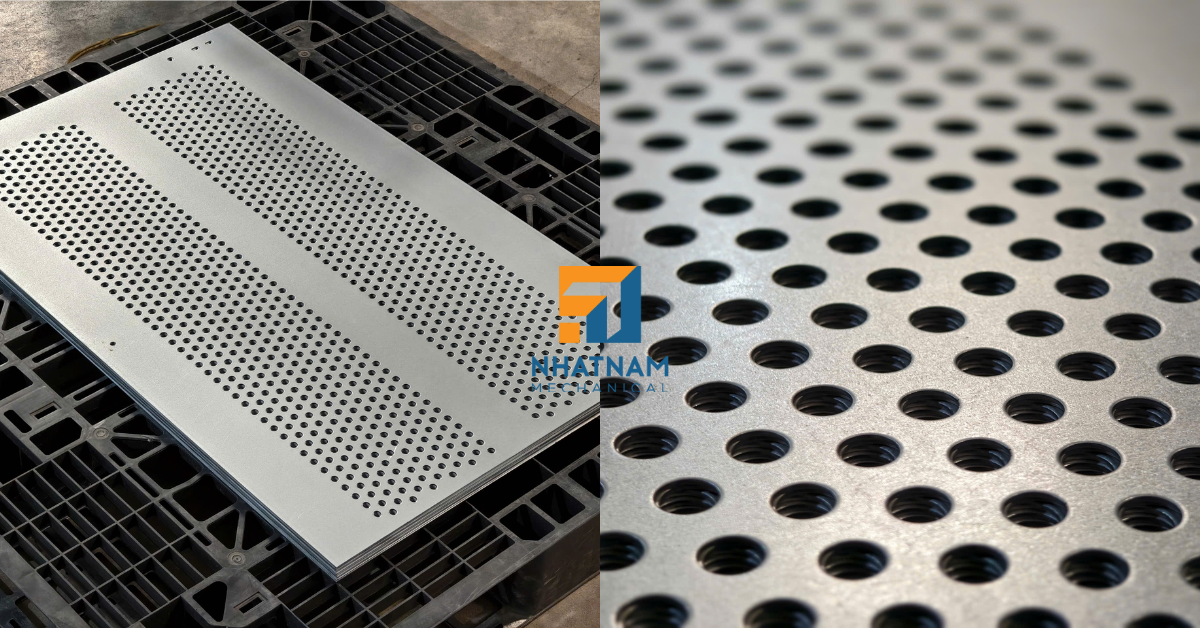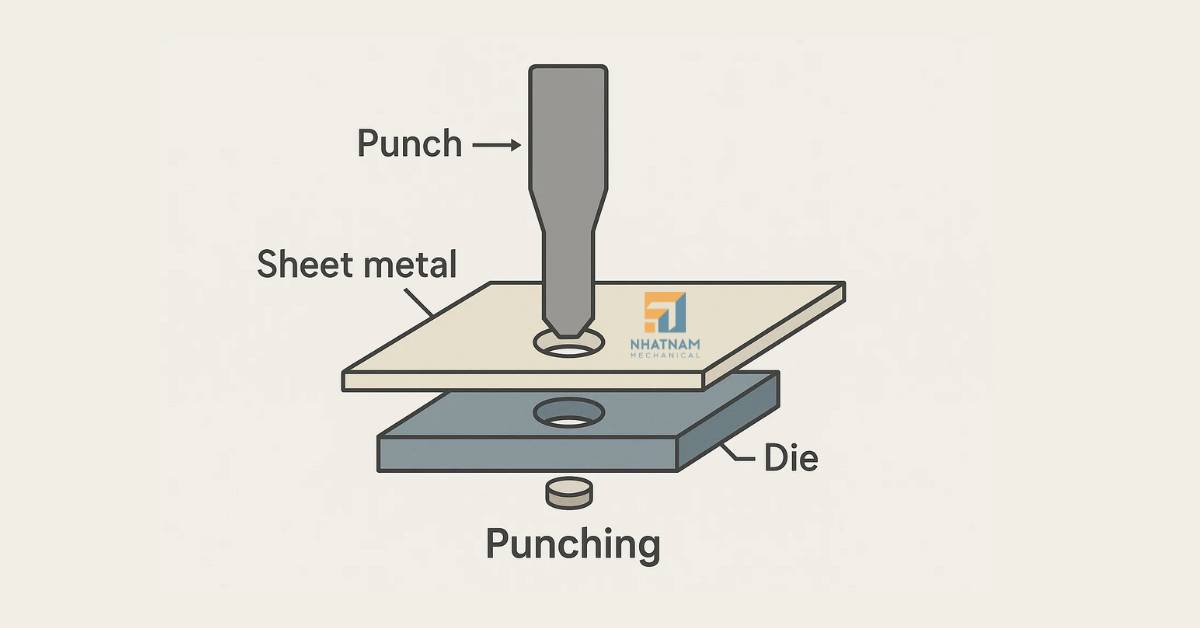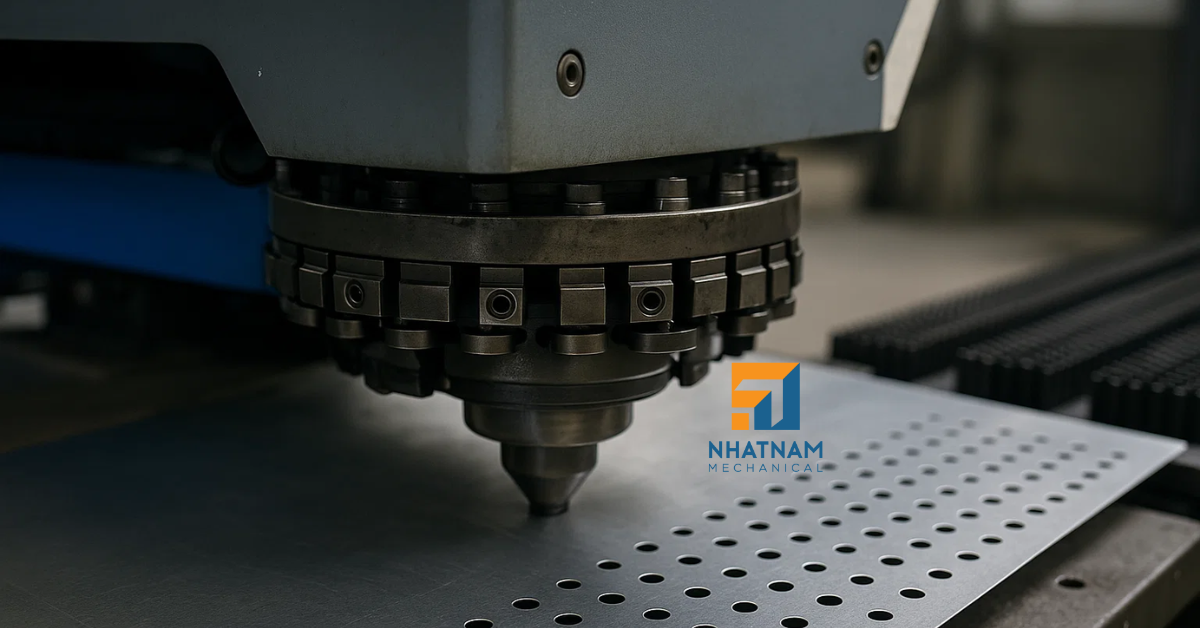
In today’s manufacturing world, what truly impresses engineers and designers isn’t just the size of machines or the scale of factories — it’s the precision. And few processes showcase this better than the sheet metal punching process.
At first glance, punching may seem like a basic, forceful action — just a punch and a hole appears. But behind every clean cut and perfect alignment is a symphony of engineering precision, advanced machinery, and meticulous setup.
Why is it necessary to punch accurately to the millimeter?
In precision mechanics, “a mistake of an inch can lead to a mile of error.”
• A punched hole that is off by just 0.3 mm can prevent a screw from tightening, stop a component from being installed, or even cause electrical leakage in a control cabinet.
• In automated systems, an incorrect hole position can lead to robots installing parts improperly or getting mechanically stuck.
The real cost of a punching error:
• Increased scrap → wasted materials.
• More manual rework and processing time.
• Reduced reliability in assembly lines or export quality.
Therefore, today’s sheet metal punching process is not just about “making holes” — it’s about making the right hole, in the right place, with the right size, and repeating it thousands of times with no error.
Factors That Ensure Accuracy in Sheet Metal Punching
1. CNC Punching Machine – The Heart of the Process
Modern punching machines operate using CNC (Computer Numerical Control) systems. Benefits include:
• Locating holes using precise X-Y coordinates.
• Quick tool changes.
• High repeatability (with errors as small as ±0.1 mm or less).
• Ability to punch various shapes: round, oval, slotted, or custom profiles.
In modern workshops, CNC punching machines reduce dependence on manual skills while increasing speed and consistency.
2. Punching Die – The Punch & Die Duo
• Punch: the tool that pushes down on the material.
• Die: the support tool underneath that shapes the hole’s edge.
The quality of the punching die affects:
• The sharpness of hole edges.
• Vibration and deformation during punching.
• Tool life and operating costs.
High-end workshops use ultra-hard dies (carbide, HSS), which are regularly sharpened to maintain consistent hole quality.

3. Sheet Metal Material
Each type of metal has different hardness, elasticity, and thickness:
• Stainless steel: hard to punch and may cause burrs with poor dies.
• Aluminum: softer, but easily deformed if punching force isn’t properly set.
• Galvanized steel: requires care to avoid peeling the coating.
Selecting the right tool and applying the correct punching force for each material is key to maintaining long-term accuracy.
4. Programming & Simulation Before Production
CAM (Computer-Aided Manufacturing) software helps:
• Optimize punching sequences to avoid sheet distortion.
• Simulate toolpaths before actual production.
• Minimize errors and save time during setup.

5. Post-Punching Inspection Systems
In modern factories, punched products go through:
• CMM (Coordinate Measuring Machine),
• Automated Vision Inspection Systems,
• Or manual inspection with digital calipers.
These ensure that every part meets 100% of specifications before moving on to bending, welding, painting, or assembly.

Applications of Precision Punching in Manufacturing
| Industry | Role of Precision Punching |
|---|---|
| Electrical – Control Cabinets | Screw holes, electrical ports, ventilation slots |
| Automotive – Motorcycles | Engine mounting brackets, fixing holes, vibration control |
| Electronics | Shields, enclosures, communication ports |
| Metal Furniture | Lock holes, hinge placements, decorative patterns |
| Medical – Industrial Equipment | Requires high precision and cleanliness |
Conclusion: Behind Every Punch Lies a Precise Thinking System
Today’s sheet metal punching process is no longer simply about “making holes.” It is a sophisticated integration of advanced machinery, technical expertise, high-quality tooling, and strict process control. As a result, manufacturers can produce highly consistent products, minimize errors, and strengthen their reputation in the market.
Nhat Nam Mechanical is a leading Vietnamese company specializing in precision sheet metal fabrication. With years of experience and a commitment to modern manufacturing technology, we provide high-quality punching, bending, welding, and assembly services for domestic and international partners. Our workshop is equipped with advanced machinery and strict quality control systems, ensuring every product meets the highest standards of accuracy, durability, and consistency.
